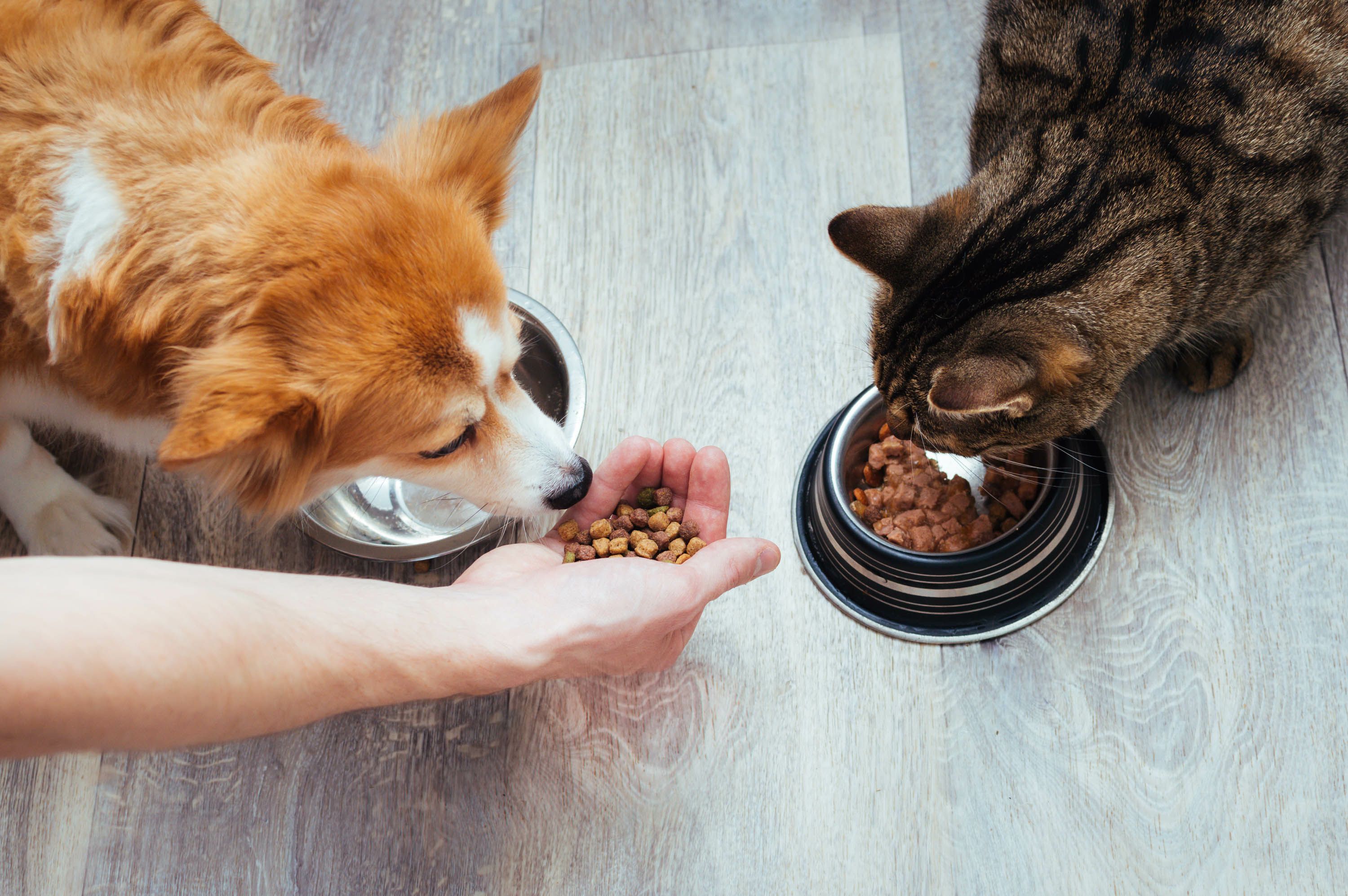New Insights into NIR Pet Food Quality Control
A recent study looked at how near-infrared (NIR) spectroscopy can evaluate the chemical composition of pet food and safeguard pet health.
There is no question that pet ownership in the United States has dramatically increased.
According to the American Pet Products Association, over 82 million U.S. households have at least one pet residing in the domicile (1,2). Of those 82 million, 58 million households have at least one dog, and 40 million households have at least one cat (2). Overall, this represents approximately 66% of households having a pet, compared to only 56% in 1988 (1). Pet ownership is expected to continue to rise.
As a result, the pet supplies and pet food industries are faced with a booming demand market. However, the increased demand will lead to more competition, as pet food companies try to attract new pet owners. As a result, there is a market incentive for pet food manufacturers to ensure the quality of pet food for consumers. The nutritional content of pet food products is often influenced by several factors, including formulations, processing techniques, and raw materials (1). Current quality control measures for evaluating pet food are time-consuming and labor-intensive, which increases the possibility of poor quality pet food entering the market (1).
Owner pours dry food to the cat and dog in the kitchen. Master's hand. Close-up. Concept dry food for animals. | Image Credit: © anastas_ - stock.adobe.com

A new study led by Jiayong Tang from Sichuan Agricultural University in Chengdu, China, explored this issue. Tang and others investigated the effectiveness of near-infrared (NIR) spectroscopy in evaluating the chemical composition of pet foods, with their findings being published in the journal Spectrochimica Acta Part A: Molecular and Biomolecular Spectroscopy (3).
In the study, Tang and his team evaluated the performance of two NIR spectrometers in assessing the chemical composition of pet food: a benchtop instrument (operating in the 1000–2500 nm wavelength range) and a low-cost handheld instrument (operating in the 900–1700 nm range) (3). Both devices were tested on a range of pet food samples, including 70 cat food samples and 36 dog food samples, to determine their ability to measure key nutritional components such as crude protein, crude fat, crude fiber, crude ash, moisture, calcium, and phosphorus (3).
Using reference methods for analyzing the pet food samples, the team applied principal component regression (PCR) and partial least squares regression (PLSR) to create predictive models for the NIR data (3). For each chemical component, the research team also improved their analysis by using the competitive adaptive reweighted sampling (CARS) algorithm (3).
Through these algorithms, the team was able to determine which instrument performed better. For the benchtop instrument, the researchers concluded that it was good at detecting some nutritional components, which include crude fat, crude protein, and moisture (3). The instrument was able to classify these components as “Good” or “Very good” with a residual prediction deviation (RPD) value greater than 3 (3). However, NIR spectroscopy struggled to accurately predict other key nutritional components. For example, for components like crude fiber and crude ash, the performance of the NIR benchtop instrument was less favorable, with RPD values falling below the threshold for acceptable prediction accuracy (3). Calcium and phosphorus predictions were classified as “Very poor,” as well (3).
The handheld instrument achieved similar results. Like with the benchtop NIR instrument, it was good at classifying crude protein, moisture, and crude fat, but it was poor in accurately predicting crude ash, crude fiber, calcium, and phosphorus (3). The research team concluded, therefore, that NIR spectroscopy is better for predicting specific pet food types (based on chemical composition) rather than a generalized model (3).
The findings show the role NIR spectroscopy can play in this industry. Although NIR spectroscopy shows great promise in predicting key nutritional components, the research highlights the need for further optimization, especially for certain components like calcium and phosphorus (3). The comparison between benchtop and handheld instruments reveals that both devices offer similar levels of performance, suggesting that even low-cost handheld instruments could be viable options for on-site testing in pet food production facilities (3).
References
- Megna, M. Pet Ownership Statistics 2024. Forbes.com. Available at: https://www.forbes.com/advisor/pet-insurance/pet-ownership-statistics/ (accessed 2024-10-17).
- American Pet Products Association, 2024 APPA National Pet Owners Survey Stats. APPA.org. Available at: https://americanpetproducts.org/industry-trends-and-stats (accessed 2024-10-17).
- Fan, Y.; Liao, J.; Zhou, Q.; et al. Rapid Prediction of the Chemical Composition of Pet Food Using a Benchtop and Handheld Near-Infrared Spectrometer. Spectrochimica Acta Part A: Mol. Biomol. Spectrosc. 2024, 323, 124916. DOI: 10.1016/j.saa.2024.124916
Toward a Generalizable Model of Diffuse Reflectance in Particulate Systems
June 30th 2025This tutorial examines the modeling of diffuse reflectance (DR) in complex particulate samples, such as powders and granular solids. Traditional theoretical frameworks like empirical absorbance, Kubelka-Munk, radiative transfer theory (RTT), and the Hapke model are presented in standard and matrix notation where applicable. Their advantages and limitations are highlighted, particularly for heterogeneous particle size distributions and real-world variations in the optical properties of particulate samples. Hybrid and emerging computational strategies, including Monte Carlo methods, full-wave numerical solvers, and machine learning (ML) models, are evaluated for their potential to produce more generalizable prediction models.
Combining AI and NIR Spectroscopy to Predict Resistant Starch (RS) Content in Rice
June 24th 2025A new study published in the journal Food Chemistry by lead authors Qian Zhao and Jun Huang from Zhejiang University of Science and Technology unveil a new data-driven framework for predicting resistant starch content in rice